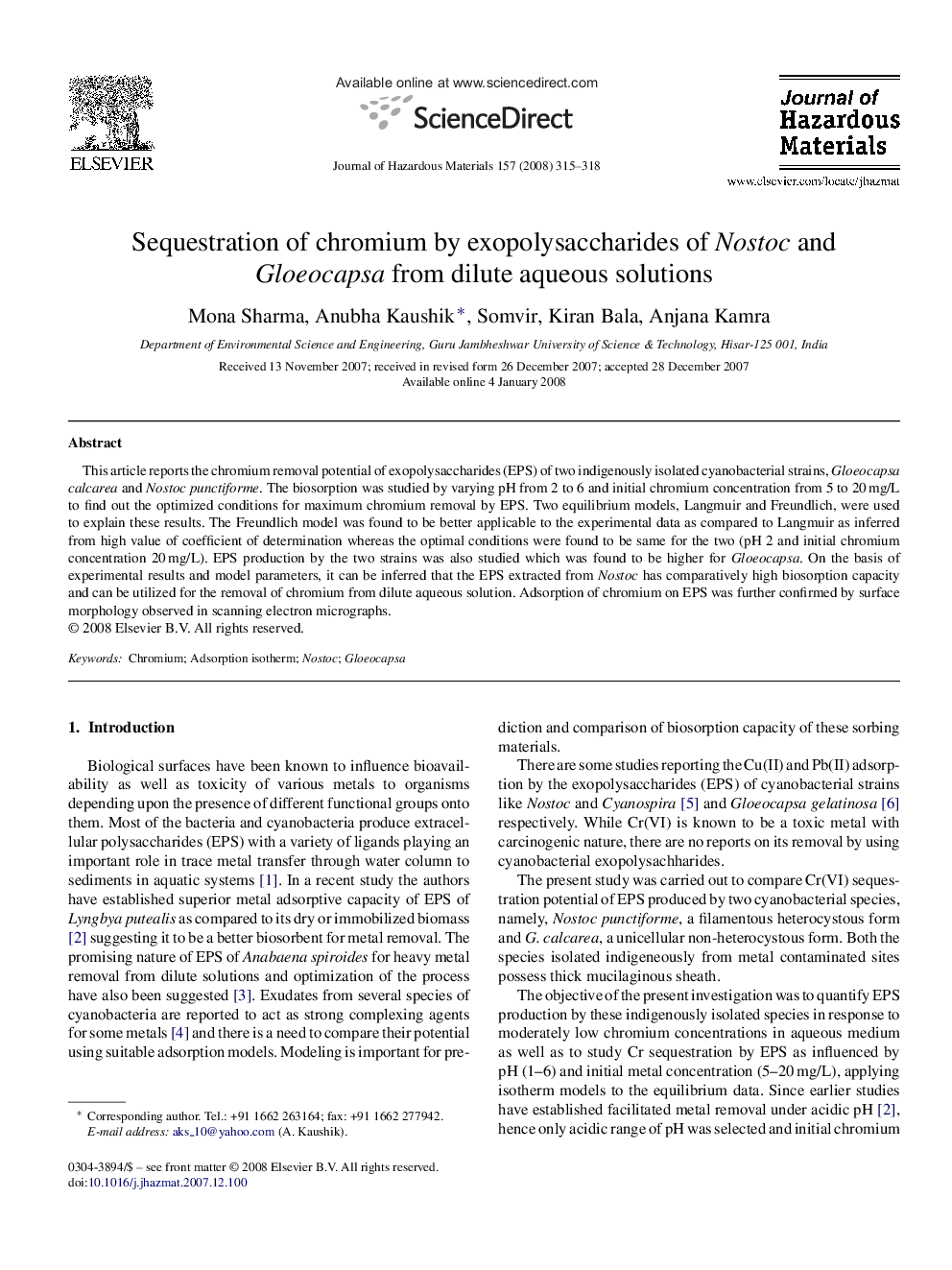| Article ID | Journal | Published Year | Pages | File Type |
|---|---|---|---|---|
| 582885 | Journal of Hazardous Materials | 2008 | 4 Pages |
Abstract
This article reports the chromium removal potential of exopolysaccharides (EPS) of two indigenously isolated cyanobacterial strains, Gloeocapsa calcarea and Nostoc punctiforme. The biosorption was studied by varying pH from 2 to 6 and initial chromium concentration from 5 to 20Â mg/L to find out the optimized conditions for maximum chromium removal by EPS. Two equilibrium models, Langmuir and Freundlich, were used to explain these results. The Freundlich model was found to be better applicable to the experimental data as compared to Langmuir as inferred from high value of coefficient of determination whereas the optimal conditions were found to be same for the two (pH 2 and initial chromium concentration 20Â mg/L). EPS production by the two strains was also studied which was found to be higher for Gloeocapsa. On the basis of experimental results and model parameters, it can be inferred that the EPS extracted from Nostoc has comparatively high biosorption capacity and can be utilized for the removal of chromium from dilute aqueous solution. Adsorption of chromium on EPS was further confirmed by surface morphology observed in scanning electron micrographs.
Keywords
Related Topics
Physical Sciences and Engineering
Chemical Engineering
Chemical Health and Safety
Authors
Mona Sharma, Anubha Kaushik, Somvir Somvir, Kiran Bala, Anjana Kamra,
